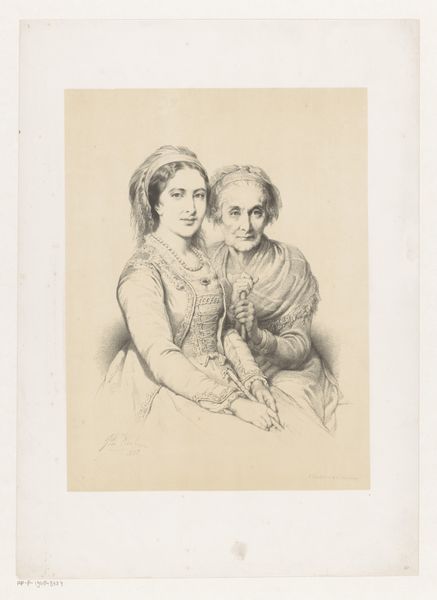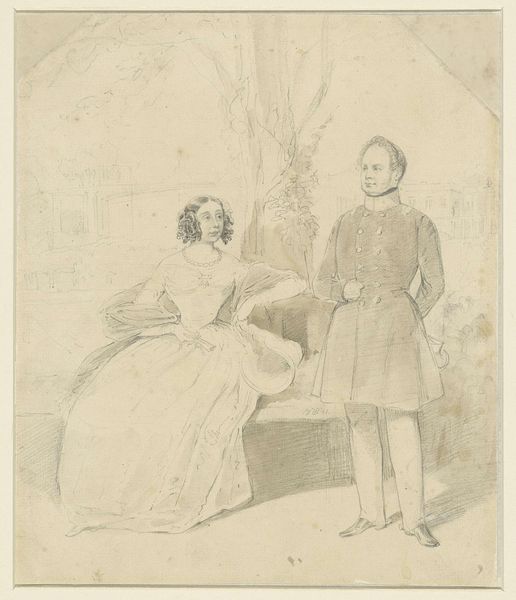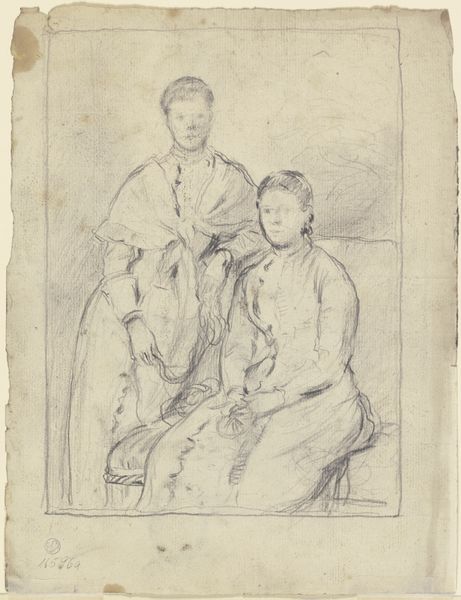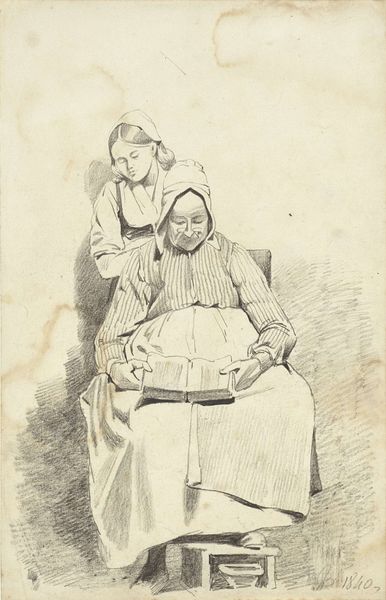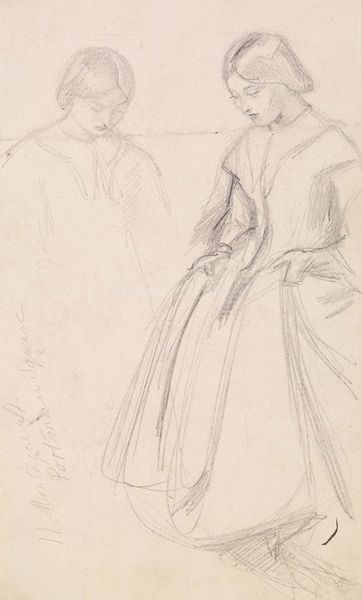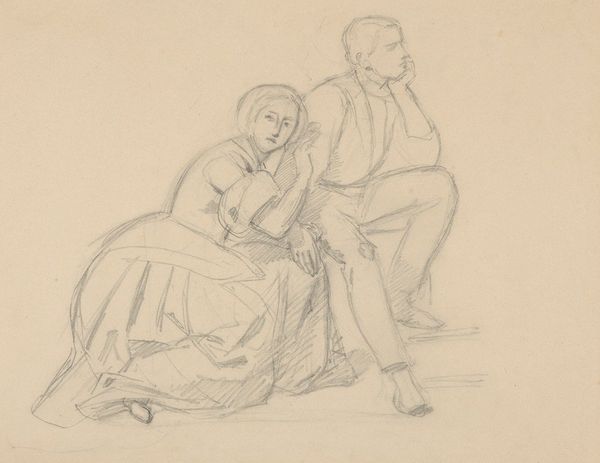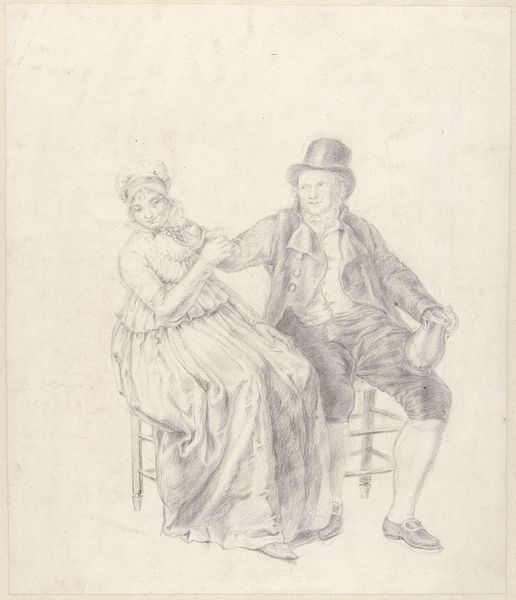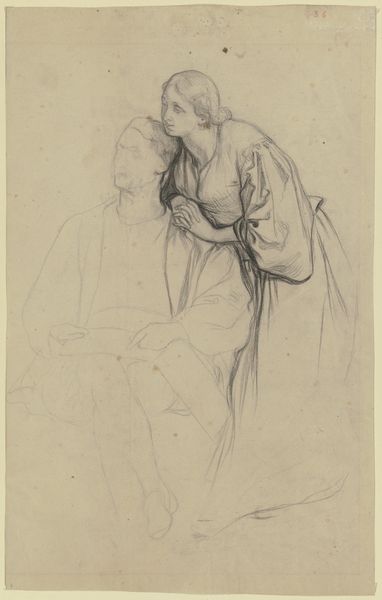
Edmond Ramel and his wife, born Irma Donbernard
0:00
0:00
jeanaugustedominiqueingres
Private Collection
drawing, pencil
#
portrait
#
drawing
#
amateur sketch
#
toned paper
#
facial expression drawing
#
light pencil work
#
pencil sketch
#
figuration
#
portrait reference
#
male-portraits
#
pencil drawing
#
sketch
#
romanticism
#
pencil
#
portrait drawing
#
facial study
#
pencil work
#
female-portraits
Copyright: Public domain
This portrait of Edmond Ramel and his wife, Irma Donbernard, was made in 1864 by Jean Auguste Dominique Ingres. Observe the delicate rendering of hands clasped together, a symbol of union and fidelity. The motif of joined hands has appeared across art history, evoking connection and promise, from Roman marriage iconography to Renaissance betrothal portraits. Here, it speaks to the intimacy between the sitters. Note how the wife's hand gently rests atop her husband’s, a subtle assertion of support. The hand, throughout time, has been a powerful conveyor of emotion, a silent language. Think of the raised hands in supplication in religious art, or the expressive gestures in Renaissance paintings. Consider how collective memory imbues such gestures with meaning, passed down through generations. Ingres masterfully uses these symbols, engaging viewers on a deep, subconscious level. The evolution of the clasped hands motif is a testament to the enduring human need for connection, forever resurfacing, evolving and taking on new meanings in different historical contexts.
Comments
No comments
Be the first to comment and join the conversation on the ultimate creative platform.
